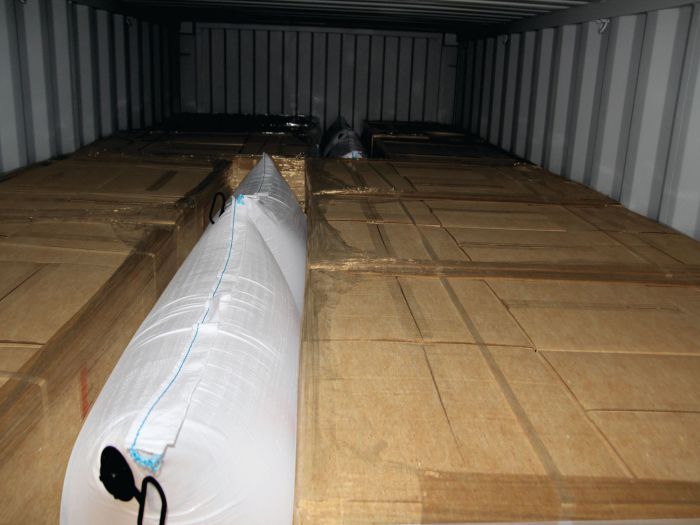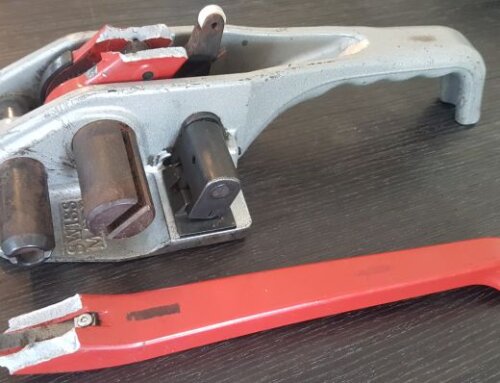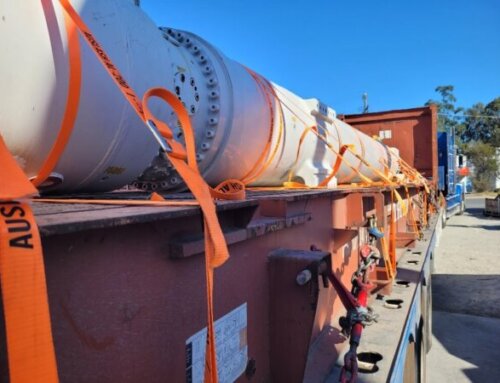Dunnage Bags Do’s and Don’ts – 10 Tips

Are you considering using Dunnage Bags to secure your cargo? Also known as Dunnage air bags, or (inflatable) cargo bags, these bags are a great cargo securing product. They can be used in shipping containers, trucks, closed rail cars and vessels.
Dunnage bags are effective in blocking and bracing of cargo. These inflatable cargo bags are a cost- and time saving alternative for timber blocking and bracing.
When compared with styrofoam, Dunnage Bags actually secure your cargo and are CTU Code Compliant, whereas styrofoam is just a void filler (check out this video “Dunnage Air Bags vs. Polystyrene Blocks in Shipping Containers Performance Test“).
If you are new to using Dunnage Bags, here are some important Do’s and Don’ts tips to make sure you use them correctly:
1. Use the correct filling tool and make sure that it is equipped with the right connector.
The valves on Dunnage Bags are like the charging ports on your mobile phone, different manufacturers put different valve types on their bags. Make sure that your inflator gun fits the valve on your dunnage bags.
There are two types of dunnage bag inflation tools. The standard inflator gun needs to be connected to an air supply (compressor). The latest generation of tools are portable battery operated dunnage bag inflators. Learn more about Dunnage Bag Inflators here.
2. Avoid, or cover, sharp edges on your cargo, because they can damage the dunnage bag.
When you cargo has sharp edges, you can use cardboard or plywood between your cargo and the dunnage bag for protection.
3. Keep the Dunnage Bags of the floor.
Container floors often have protruding nails or splinters which can puncture your bags. If you are using paper dunnage bags, moisture on the floor can also damage your bags.
4. Don’t exceed the maximum void of the dunnage bags.
If you exceed the maximum void, dunnage bag loose their functionality. Learn more about selecting the right size dunnage bag here
5. Don’t use 2 dunnage bags next to each other or fold bags.
This just does not work. The bags will slide.
6. Don’t use dunnage bags that are taller than your cargo.
Using dunnage bags that are taller than your cargo will create a ballooning effect, as the air will always travel to the area of least resistance.
7. Don’t use dunnage bags for transport by air.
The cabin pressure fluctuates too much to keep a consistent air pressure inside the bags. This can result in the bags to deflate or explode.
8. Do not overinflate your dunnage bags.
Never over inflate dunnage bags as this will likely cause them to explode.
9. Use correct strength level for your cargo and mode of transport.
There are 6 levels (including level 0) of dunnage bags. This article provides insight selecting the right level dunnage bag.
10. Never position dunnage bags between cargo and container doors.
This can build up force at the door, creating a dangerous situation upon opening of the container doors.
When in doubt, always ask advice from your cargo securing experts!
We are always available to assist you with free recommendations and/or a 3D loading plan. Don’t hesitate to get in touch with us anytime. You can simply call our office at 1300 4 strap (1300 478 727) or send us an email at info@cargorestraintsystems.com.au






